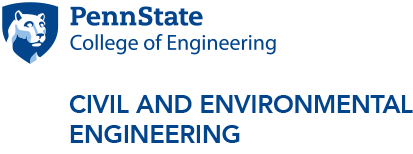Urban Stream Flow and Quality Across Scales: The Importance of Infrastructure
Urban watersheds combine hydrologic flowpaths to streams and rivers that are common in less anthropogenically-altered systems with infrastructure-mediated flowpaths. Despite frequently being framed as more ‘homogeneous’ watersheds, this alteration changes the timing, magnitude, and quality of flow in urban streams in ways that can vary across scale and across locations.
The first talk presents an analysis of the changes to streamflow in the semi-arid area of Denver, Colorado, USA with a focus on (1) contributors to stream baseflow, and in particular water supply pipe leakage and lawn irrigation return flow and (2) an analysis of changes in streamflow response to rainfall events with urbanization. To estimate contributions to stream baseflow, we used water-stable isotope analysis of surface water, tap water, and precipitation in thirteen urban streams and two grassland streams. For changes to streamflow response to rainfall events, we used eight years of instantaneous streamflow data in 21 watersheds ranging in size from 1 to 90 km2 with impervious areas ranging from 1% to 47%. We found that more impervious watersheds had perennial or nearly perennial flow, unlike the least impervious watersheds which usually were dry. Streamflow events were shorter in duration and had higher peak flow in watersheds with more impervious surface cover. This work points to the need for local adaptation of stormwater management that seeks to mitigate the effects of streamflow changes with urbanization, and the potential unintended consequences of changing outdoor water use in reducing urban streamflow.
The second talk focuses on the interactions between environmental injustice, infrastructure, and E. coli contamination in urban streams. Discharge of raw sewage into streams and rivers from centralized sanitary sewer systems is illegal in the United States, yet still occurs with regular frequency. Aging infrastructure combined with purposeful neglect often result in higher exposure and burden of such spills in Black, Indigenous, and other communities of color. The South River Watershed Alliance works both within and beyond the regulatory framework to address the environmental injustice around sewage and other environmental hazards in the Upper South River, Atlanta, GA, which has a population that is over 85% Black. E. coli data collected since 2019 in the watershed shows locations of high concentration vary through time and are not readily associated with landscape parameters. Unlike the larger Chattahoochee River which has a BacteriAlert model to predict concentrations, we have not found other, more easily measured predictor variables that correlated to E. coli contamination in the Upper South River, which would allow for safer recreation decision making. While the sampling program has successfully found point-source sewer breaks, identifying non-point sources of sewage and building models to help predict times of high risk of E. coli contamination remains challenging.
Bio: Aditi Bhaskar is an Associate Professor in the Department of Civil, Environmental, and Architectural Engineering at the University of Colorado Boulder. She received a Sc.B. in Geology-Physics/Math from Brown University, a Ph.D. in Environmental Engineering from University of Maryland, Baltimore County. She was then a post-doctoral researcher at U.S. Geological Survey in Reston, Virginia. Dr. Bhaskar was a faculty member at Colorado State University for 6 years before joining CU in 2023.
Bio: Sarah H. Ledford is an Assistant Professor in the Department of Geosciences at Georgia State University. She received her BA in Earth Sciences from Vassar College before completing her PhD at Syracuse University and post-doctoral research at Temple University. Her research aims to answer questions about how changes to the structure of the hydrologic system, put in place by human changes to the landscape, impact the functioning of hydrologic cycling in cities, including the movement of water and subsequent quality of streams and rivers.
Event Contact: Li Li



